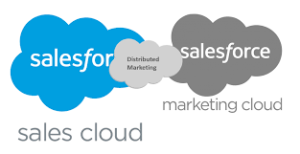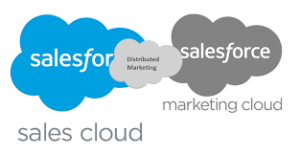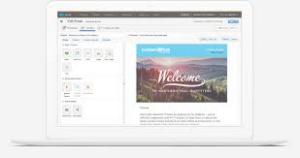How to Initiate Email Segmentation: A Guide to Personalized Marketing
Illustration depicting email segmentation: Three individuals seated on envelopes of different colors.
Email segmentation serves as your marketing GPS, directing your message precisely to its intended destination. Customers increasingly seek personalized, relevant messages from brands. Here’s how a robust email segmentation strategy can achieve just that.
Personalization is paramount in effective email marketing. While it’s widely acknowledged, executing it is another matter entirely. This is where email segmentation becomes invaluable. By categorizing your email list effectively, you lay the groundwork for delivering targeted content to the right audience.
But what exactly entails segmentation, and how can you ensure its efficacy? Let’s dig into the details.
Explore how brands like Mastercard and Grammarly leverage email marketing to foster enduring customer relationships.
What Is Email Segmentation?
Segmentation involves organizing your email recipients into smaller groups to deliver tailored information. These groups are typically based on behavioral or demographic data, such as geographical location, past purchases, or specific website interactions.
For instance, imagine I’m an enthusiastic fitness buff residing in California who recently subscribed to a fitness newsletter. The segmentation possibilities abound: California residents, new subscribers, fitness enthusiasts, and those interested in particular workout types.
As a member of such a segmented group, I might receive emails about exclusive California-based fitness events, personalized workout plans for beginners (reflecting my recent subscription), or promotions on fitness gear tailored to my preferences. This targeted approach fosters a more engaging and relevant experience for recipients.
Segments can vary in scope, ranging from all individuals who purchased a product via your business’s Instagram site to more nuanced groups. Regardless, segmentation enables personalized and targeted content delivery, leading to increased conversions and a more satisfied customer base.
Why Is Email Segmentation Important?
Think of segmentation as your marketing GPS, guiding your message directly to its intended destination. By tailoring content to specific segments, you ensure that your audience receives information aligned with their interests, behaviors, and preferences.
For instance, a large fashion retailer planning a sneaker sale can exclusively target an audience segment interested in athletic footwear. However, even small businesses can leverage segmentation effectively.
Consider my local bakery, which identified my fondness for their cinnamon rolls. Instead of bombarding my inbox with irrelevant promotions, they sent me a coupon for a complimentary treat during my birthday month. This gesture transformed me from a casual customer into a loyal one, as it demonstrated care and personalized attention.
Segmentation enables brands to speak their customers’ language. Different segments may respond better to varied tones, styles, or promotional offers. For instance, loyal customers may appreciate exclusive early access to sales, while new subscribers may value welcome discounts.
Whether it’s appointment reminders from healthcare clinics or personalized shopping tips, segmentation facilitates meaningful conversations with each audience member. In the digital marketing realm, such interactions translate into lasting connections and business growth.
Primary Types of Email Segmentation
Several segmentation types warrant attention as you embark on your email marketing journey:
Demographic segmentation: Organizing your email list based on attributes like age, income, gender identity, language, or ethnicity. For instance, a travel company may segment subscribers by age groups to tailor offerings, such as adventurous backpacking trips for younger demographics and relaxing cruises for older ones.
Behavioral segmentation: Categorizing recipients based on actions and interactions, including purchase history, website interactions, and email engagement. For example, frequent purchasers of running shoes might belong to a “Running Enthusiasts” segment, receiving emails about the latest running gear.
Geographic segmentation: Tailoring emails based on recipients’ locations to ensure content relevance. For instance, a clothing retailer may target customers in colder regions with promotions for winter apparel.
Psychographic segmentation: Focusing on lifestyle, interests, values, and attitudes to deliver personalized content. For instance, a tech sales company may craft emails promoting gaming devices for one segment and productivity tools for another.
Customer lifecycle segmentation: Recognizing subscribers’ positions in the customer journey to deliver appropriate content. For instance, new subscribers may receive onboarding emails, while loyal customers receive exclusive rewards.
Waterfall segmentation: Prioritizing segments based on importance, ensuring targeted messaging without overwhelming recipients.
Explore Email Segmentation Tools:
Discover how customer relationship management (CRM) systems, analytics tools, and email marketing platforms facilitate effective segmentation.
Key Tools for Email Segmentation
Effective email segmentation relies on robust tools for data gathering, analysis, and execution:
Customer relationship management (CRM) systems: Centralize and manage customer data, facilitating targeted campaigns.
Analytics tools: Extract meaningful insights from data to inform segmentation strategies.
Email marketing platforms: Utilize advanced segmentation features for creating targeted campaigns.
Marketing automation tools: Streamline workflows based on segmentation criteria for efficient campaign execution.
Integration between these tools ensures seamless data flow, enabling precise and personalized segmentation strategies.
Harness the Power of AI for Segmentation
Artificial intelligence (AI) enhances segmentation efforts through predictive analytics and machine learning:
Predictive analytics: Forecast customer behaviors based on vast datasets, guiding segmentation strategies.
Machine learning: Analyze customer interactions to identify patterns and predict future actions.
AI-driven segmentation simplifies the process, allowing marketers to create segments effortlessly. Natural language prompts enable intuitive segmentation instructions without technical complexity.
AI also enables dynamic and responsive strategies, continuously refining segmentation based on changing trends and customer preferences. By leveraging AI, marketers can adapt to evolving landscapes and ensure campaign relevancy.
Future Trends in Email Segmentation
As privacy regulations render cookies obsolete, email segmentation will rely on first-party data obtained directly from customers. Personalized, relevant content based on willingly shared information will be pivotal in building trust and comfort with customers.
AI-driven tools will continue to revolutionize segmentation, offering predictive capabilities and automation for enhanced precision and efficiency. Predictive AI will forecast customer behaviors, enabling proactive targeting and refined segmentation.
Email segmentation will remain a powerful force multiplier in the digital marketer’s pocket, amplifying the impact of personalization and customer journey mapping. By tailoring content to nuanced segments, marketers can foster deeper engagement and navigate the digital landscape with award winning customer experiences.
Email segmentation empowers marketers to deliver personalized, relevant content to targeted audiences, fostering deeper engagement and lasting connections. By leveraging segmentation effectively and embracing AI-driven tools, marketers can navigate evolving landscapes with precision and relevance. Email segmentation is not just a strategy—it’s a potent force multiplier for building meaningful audience relationships.










